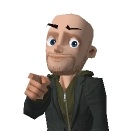by W. Ian O'Byrne
We often spend time discussing ways to embed reading and writing instruction into classroom activities. As an extension of this work we try to identify ways to embed digital texts and tools into these literacy activities. The posts from Reading Today Online are an excellent resource to think critically about possible ways to enhance teaching and learning. For this post I would like to discuss ways that we can empower teachers as composers, or "makers" of online information.
Much of the work integrating online information into the classroom consists of reading online, multimodal content. Writing, or constructing online content is a great way to turbocharge classrooms using digital texts and tools. Of course there are numerous challenges and concerns when having students construct, make, or write online information. I think the first step should be having teachers initially compose, or "make" online information for the classroom. I have argued that teachers should not only have an online identity, but also a vibrant classroom website that acts as an educational resource for students and parents. To get started, build your own website for free at Google Sites or Wikispaces. I would then suggest enrolling in a MOOC this summer to build content to add to your website.
There are numerous MOOCs online that will help teachers build the skill set necessary to empower teachers as makers of online information. For those of you that are a bit suspicious of the label "MOOC"…don't be. MOOC stands for Massive Open Online Course.
Some of the MOOCs that I have been involved with lately can be described as free, open, educational resources.
I recently have been involved in (and challenged by) the Mozilla TeachTheWeb MOOC. I'm also looking forward to the Making Learning Connected MOOC being developed by the National Writing Project. Finally, I have been developing my own MOOC focusing on ways to authentically and effectively embed new literacies in the CCSS. Some of the content in these classes may seem a bit above what you believe you can do with technology. The power in these classes really is the community associated with the learning environment. Additionally, since MOOCs are open and online, they frequently make all resources and student exemplars available online to view. This means that you can work through in privacy, at your own speed, and use the work of others to scaffold your own progress.
To get started, I suggest you first start up your own classroom website using a free tool like Google Sites or Wikispaces. Then sign up for one of the MOOCs I listed above to learn this summer. If you’re interested in learning more, or need more support, please contact me at the information below and I’ll help you make the leap.

Image CC by opensourceway
 W. Ian O'Byrne is an assistant professor in the Department of Education at the University of New Haven. You can follow him on Twitter (@wiobyrne), at Google+, or contact him at wiobyrne@gmail.com.
W. Ian O'Byrne is an assistant professor in the Department of Education at the University of New Haven. You can follow him on Twitter (@wiobyrne), at Google+, or contact him at wiobyrne@gmail.com.
This article is part of a series from the Technology in Literacy Education Special Interest Group (TILE-SIG).